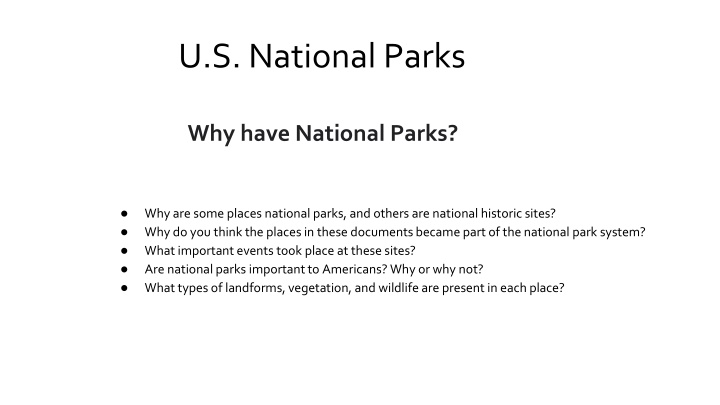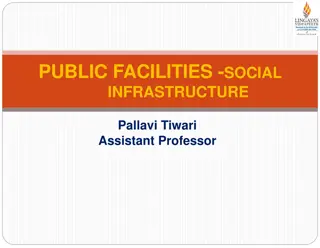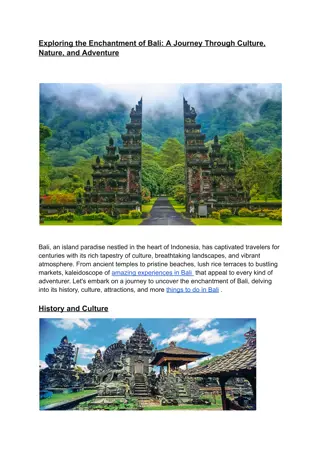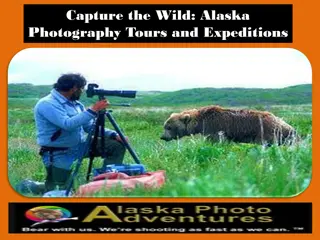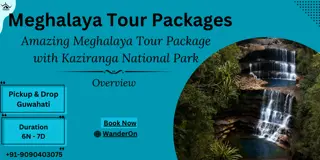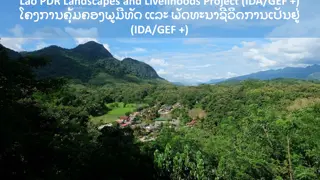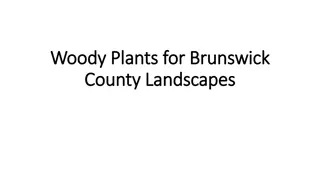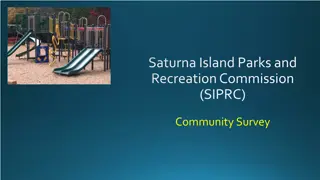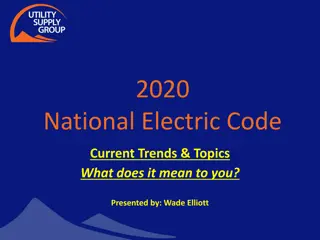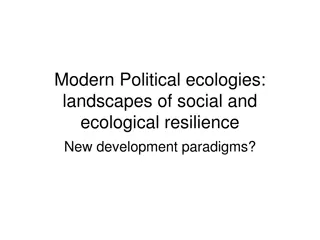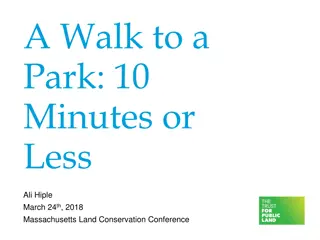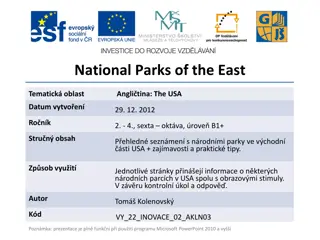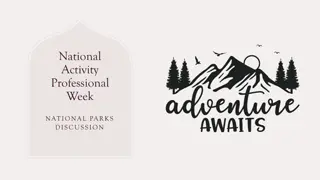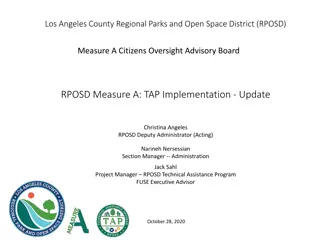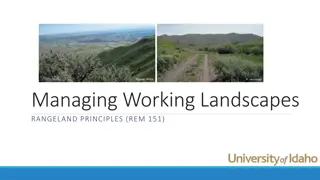Exploring U.S. National Parks: History, Significance, and Breathtaking Landscapes
Discover the significance of U.S. National Parks and National Historic Sites, exploring why certain places were chosen for preservation. Dive into the historical events that shaped these sites, understanding their importance to Americans. Explore the diverse landforms, vegetation, and wildlife present in iconic locations like Yellowstone and Mount Rushmore. Reflect on the unique physical geography and historical context of each site, contemplating their role in American heritage.
Download Presentation

Please find below an Image/Link to download the presentation.
The content on the website is provided AS IS for your information and personal use only. It may not be sold, licensed, or shared on other websites without obtaining consent from the author.If you encounter any issues during the download, it is possible that the publisher has removed the file from their server.
You are allowed to download the files provided on this website for personal or commercial use, subject to the condition that they are used lawfully. All files are the property of their respective owners.
The content on the website is provided AS IS for your information and personal use only. It may not be sold, licensed, or shared on other websites without obtaining consent from the author.
E N D
Presentation Transcript
U.S. National Parks Why have National Parks? Why are some places national parks, and others are national historic sites? Why do you think the places in these documents became part of the national park system? What important events took place at these sites? Are national parks important to Americans? Why or why not? What types of landforms, vegetation, and wildlife are present in each place?
Group of people, some on horseback, looking at canyon and Great Fall of the Yellowstone River, Yellowstone National Park, Wyoming.
What landforms do you see in this photograph? Are they unusual? What type of wildlife do you think would live in this habitat? Give evidence from the photo to support your answer. When do you think this photograph was taken? Give evidence from the photo to support your answer. Why do you think this place became a national park? Yellowstone Canyon and Great Fall, Wyoming. Yellowstone National Park, ca. 1931. LIbrary of Congress Prints and Photographs Division.
Photograph of Mount Rushmore, Mount Rushmore National Park, South Dakota
Describe the physical geography you see at this place. Why do you think these four presidents were chosen for the sculpture? What were their contributions to the history of the United States? Should more presidents be added to Mount Rushmore? Why do you think this place became a national park? Highsmith, Carol M, photographer. Mount Rushmore, South Dakota. Mount Rushmore South Dakota United States, None. [Between 1980 and 2006] Library of Congress Prints and Photographs Division.
The photograph, taken between 1920 and 1950, shows the outside of Independence Hall in Philadelphia, with trees and a statue.
What historic event(s) happened at this site? Should this place be part of the National Park Service? Why or why not? Horydczak, Theodor, photographer. Independence Hall exterior I. Pennsylvania Philadelphia, ca. 1920- ca. 1950. Library of Congress Prints and Photographs Division.
Picture of the old entrance to the Government Reservation (National Park), Hot Springs, Arkansas, taken between 1896 and 1901.
What type of park is this? What type of vegetation and wildlife would you find in this habitat? Detroit Publishing Co., Publisher. The Entrance, Government Reservation, Hot Springs, Ark. Arkansas Hot Springs Hot Springs. United States, None. [Between 1896 and 1901] Photograph.
This booklet is a tourist guide to Hot Springs National Park written in 1919. It contains maps, photographs, lists of the bathhouses, and descriptions of other attractions.
Why was this place set aside as a national park? Why were the hot springs were a tourist attraction? What was the purpose of creating this booklet about Hot Springs National Park? United States Railroad Administration. Hot Springs National Park, Arkansas. Chicago: Press of W. J. Hartman co, 1919. Library of Congress.
Works Progress Administration poster advertising Grand Canyon National Park, ca. 1938
What landforms do you see in this photograph? Are they unusual? Why do you think this poster was created? Why do you think this place became a national park? Works Progress Administration. Grand Canyon National Park, a Free Government Service. ca. 1938. [Washington, D.C.: Department of the Interior, National Park Service] Library of Congress Prints and Photographs Division.
Statue of Liberty view is from ground level and Ellis Island is viewed from above. Includes text, location map showing ferry connections, 2 illustrated timelines and illustrations depicting the history of the area.
United States National Park Service. Statue of Liberty and Ellis Island. [Washington, D.C.: National Park Service, 2010] Map. What physical geography do you see in this brochure? Why do you think this brochure was created? Why do you think this place became a national park?
